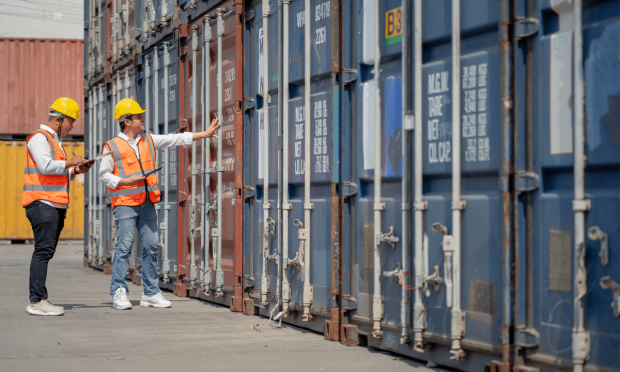
Summer may feel like yesterday, but already, the holiday season is on the horizon.
As it gets closer, buyers, suppliers, shippers and carriers all need to start prepping. That’s because while consumers might complain about holiday traffic, nothing logs more miles over the holidays than the goods soon to be stocked across countless shelves.
But with ongoing macro challenges dampening consumer confidence, and the darker side of holiday cheer often turning commercial occasions into times of financial stress for both businesses and their customers, it can be challenging for businesses to know just how much to buy and when.
Fortunately, new digital tools like artificial intelligence (AI) and automation capabilities are increasingly streamlining supply chains and helping firms fix their forecasting with dynamic inventory projections, real-time transparency and more operational benefits.
For instance, Uber Freight announced on Thursday (Sept. 28) it was launching a new suite of AI-powered software to help solve for ongoing freight frictions and transform the global movement of goods.
One of the key offerings is a next-generation upgrade to Uber Freight’s Transportation Management System (TMS) to provide enhanced visibility, foresight and control for shippers across modes including rail, ocean and air.
Read also: Shipping Sector Finds Smarter Ways to Operate Using Generative AI
Given how fragmented the shipping and logistics sector’s legacy processes are, compounded by how riddled workflows are with long-standing manual bottlenecks, the industry is particularly primed for optimization through next-generation tech solutions.
For one, the freight industry is capturing more data than ever from connected devices and inventory tracking tools, which can be fed into AI models for real-time analysis.
“With data, you can organize prediction rates and capacity, simplifying completely fragmented information across a massive volume of companies and providing different services to different operators and shippers based on their needs,” Fernando Correa, CEO and co-founder of international digital trade company Cargobot, told PYMNTS.
AI technology can reduce warehouse wait time for drivers, help cut down on empty miles, and smooth over in real-time the inefficiencies that endemically arise from the complexity of connecting shipping networks across land, sea and sky that involve thousands of companies and contractors.
“All these incredible transformations with cloud computing and the internet have helped us organize and disseminate information,” Pat Dillon, CFO at intelligent supply chain platform Flock Freight, told PYMNTS. “But now, that transformation is increasingly coming to the physical world of transportation, and we are really excited about the momentum.”
PYMNTS Intelligence has found that the drive to modernize procurement systems and logistics and supply chain functions is happening across industries.
“The core problems [in global shipping and logistics] are ultimately about order and inventory visibility. What is moving? Where is it moving? What container is it in?” Will Hansmann, the former chief technology officer at logistics technology firm project44, told PYMNTS. “The expectation today is that customers will have real-time visibility into where everything is.”
Still, before it can step in and change the game for the logistics space, modern solution providers and their AI algorithms will need to confront the ongoing fact that how data is collected, disseminated and presented within the space is historically siloed and challenging to integrate.
See also: Real-Time Insights Bring Clarity to Chaos of Global Logistics Sector
Solving for entrenched fragmentation requires more than just technology — there also needs to be a behavioral shift in the way that things are done, which may be challenging to enact.
Integrating AI solutions requires firms used to manual processes to leverage significant computing resources, as well as labor resources, to pull efficiencies from the systems.
But that doesn’t mean it’s a hopeless situation — and this holiday season could be a good proving ground for the newest generation of technology.
That’s because PYMNTS Intelligence finds that two-thirds of U.S. consumers cite December and November — better known as the holiday season — as the time of most financial stress.
And with inflation still outpacing disposable income, no one can know for sure just what the realities of this year’s holiday shopping period might bring.
One thing is certain: gut instincts and best guesses won’t cut it, meaning that logistics firms may have to turn to AI tools and digital software solutions to help them navigate the upcoming unknowns.